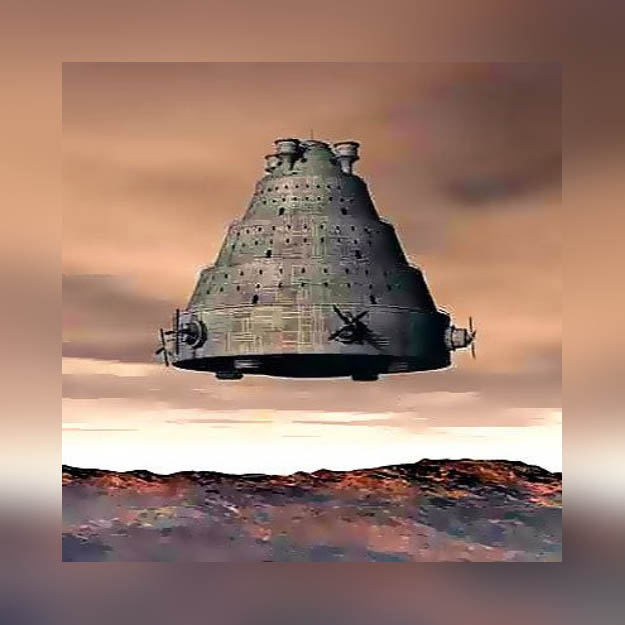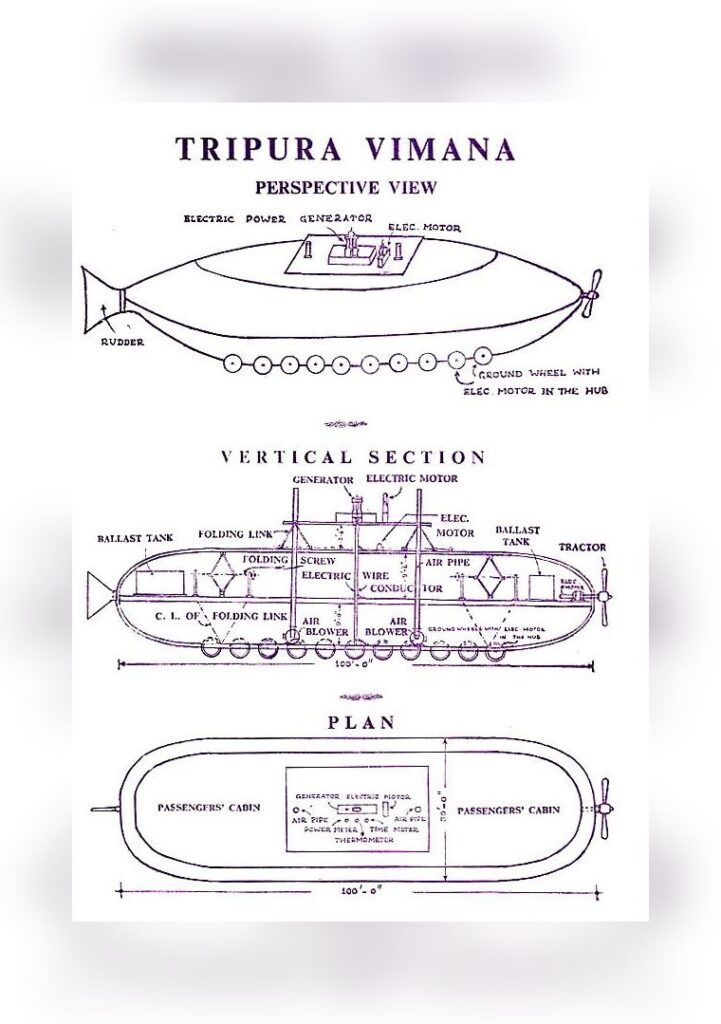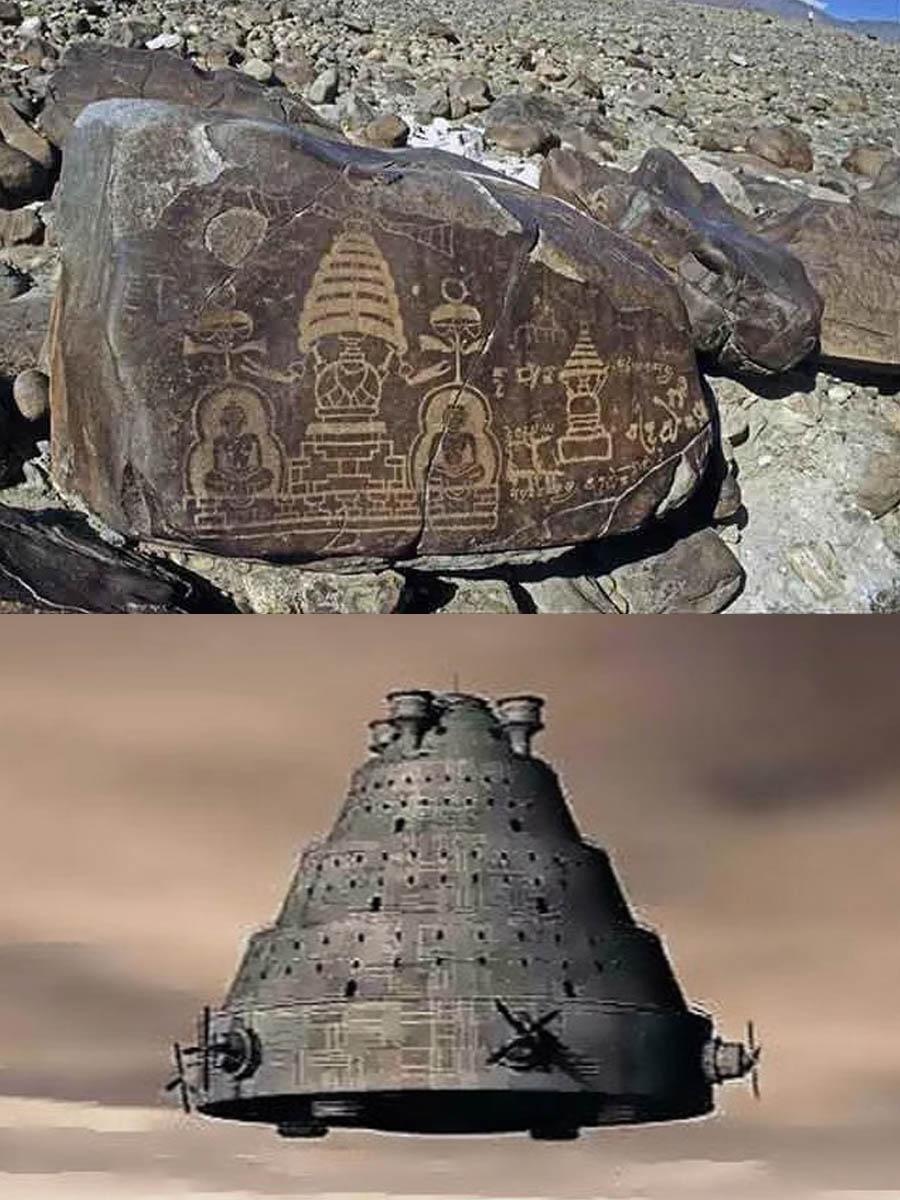In 2012 a viral story claimed U.S. troops found a 5,000-year-old flying machine in an Afghan cave — and that soldiers who touched it vanished. Seriously dramatic. Then the internet did what it loves: spun theories, named presidents, and turned a rumor into a legend overnight. But before we pack our bags for a sci-fi road trip, let’s untangle the mess. Here’s a clearer, sass-friendly look at vimanas — what the old texts say, what modern fans claim, and what’s actually plausible.
TL;DR
- Vimanas are linguistic chameleons: The Sanskrit word means “palace,” “spire,” or “flying craft,” blurring the lines between myth and machine.
- The ancient texts are vivid but vague: Epics like the Ramayana describe flying chariots, but the details are poetic, not blueprints.
- The technical manual is fake: The 20th-century Vaimānika Śāstra is widely considered modern fan-fiction that ignores basic physics.
- The mercury engine link is circumstantial: The mention of mercury in propulsion is a fascinating coincidence, not proof of lost technology.
- The 2012 cave story was a viral hoax: There is zero credible evidence for the Afghan cave discovery.
- The key proof is missing: We have no physical fragments or archaeological traces of ancient, advanced aircraft.
What is a vimana

A vimana in Sanskrit can mean many things. At its simplest: a palace, temple spire, or chariot. In epic stories, though, it’s often a flying craft — sometimes a bright cloud, sometimes a flying palace. So yes, the word flexes between poetry and machine.
The ancient stories — vivid, repeated, and weirdly specific

First, the epics. The Ramayana tells of the Pushpaka vimana, a stolen flying chariot that can float into the higher sky. It’s used like a vehicle: people get in, it rises, it moves. Then the Mahābhārata adds more of these aerial chariots — with wheels, cabins, and passengers. Across other texts and temple carvings, flying beings and hovering chariots show up again and again.
So here’s the puzzle: multiple stories, multiple sources, and even stone carvings. That makes the idea stick in people’s heads. Repetition makes a myth feel real, especially when the details sound technical: cabins, directional change, even interplanetary ranges in some lists.
The Vaimānika Śāstra — blueprint, fanfic, or forgery?

A 20th-century text called the Vaimānika Śāstra bills itself as a technical manual for building vimanas. It reads like a weird mashup of medieval imagination and modern sci-fi: spinning gyros, mercury engines, pilot training, and exotic alloys.
However, critics point out big problems. The style and ideas match later imagination more than ancient engineering. Scientists who examined it argued the designs ignore aerodynamics and basic physics. In short: cool reading, poor engineering.
Modern claims: lost tech, aliens, and Shivkar Talpade
There are three big modern flavors of belief:
- Lost advanced civilization: Maybe our ancestors had tech and it vanished. Texts preserved it in myth. Possible? Maybe. Evidence? Not so much.
- Ancient astronauts: Aliens arrived, handed us propulsion notes, and left. Popular, cinematic, and fun. Evidence is anecdotal and interpretive.
- Early aviation experiments: Some stories name individuals like Shivkar Bapuji Talpade, who is said to have flown a model plane in the 1890s based on ancient formulas. That’s an intriguing claim, and it’s been repeated by nationalists and enthusiasts. But reliable documentation is missing, and independent verification is thin.
Also, historical writers like Desmond Leslie popularized nuclear-like descriptions in epics (bright flashes, scorched fields), pushing the “ancient nukes” reading. Again: dramatic, but not airtight proof.
The mercury engine idea — coincidence or prophecy?

One weird detail: some ancient passages and the Vaimānika Śāstra mention mercury in propulsion. Modern engineers note an interesting echo: mid-20th-century ion thrusters once used mercury as a propellant. Coincidence? Maybe. People like a tidy link: ancient writer mentions mercury, modern tech uses mercury, therefore ancient tech predicted space engines.
But hold up. That’s pattern-finding, not proof. Independent archaeological evidence of mercury-powered craft is nonexistent. Still, the detail is eyebrow-raising — and it’s one reason the story won’t die.
Visual “evidence” — carvings, temples, and interpretation
Temples in India and Southeast Asia show celestial beings riding clouds or chariots. Sites like Ellora and others have reliefs that enthusiasts point to as proof of vimanas. But art is symbolic. Temple spires called vimanas complicate interpretation: the same word for a tower also gets used for a flying thing. So sculptures that look “like flying machines” might simply be divine imagery rendered in stone.
The 2012 cave story — viral hoax
That dramatic 2012 tale about U.S. soldiers finding a 5,000-year-old flying machine in Afghanistan? Viral, cinematic, and unverified. No credible military or academic report backs it up. Global leader visits tied to the find? Also unproven. Short version: high on drama, low on verifiable facts.
Skeptical take — why we should be careful
- No wrecks, no spare parts. Complex tech leaves traces. We have ancient iron tools and surgical instruments, but no aircraft fragments, blades, or engine bits from prehistory.
- Words shift. Vimana evolves in meaning: palace → temple spire → (later) aircraft. That linguistic shift fuels misreadings.
- Modern imagination colors the past. Early 20th-century authors, national pride, and UFO culture all reshape how people read ancient texts.
- Extraordinary claims need extraordinary evidence. Right now, we have stories, carvings, and modern texts — not a clear artifact or data point.
Why the story keeps coming back
Because it’s emotionally satisfying. The idea that humans once did the impossible — and that knowledge vanished — is comforting, heroic, and conspiratorial. It feeds national pride, wonder, and the belief that reality is stranger than we think. Also, conspiracy narratives travel fast online. So do romance and myth.
My point of view
I love the drama. I also like reasonable history. So here’s my take: vimanas are mostly myth and metaphor, with a few possible kernels of old tech ideas or experiments. Ancient people imagined flight — clearly. They described it in stunning ways. Sometimes they proto-engineered ideas on paper. But the jump from poetic chariot to fully engineered, physically tested aircraft with engines and spare parts? That leap needs real objects or records, and we simply don’t have them.
That said, legends can carry real clues. Maybe ancient builders experimented with gliders or simple aerodynamics. Maybe certain descriptions preserve real but misunderstood technologies. Maybe some creative inventor centuries ago sketched a clever machine and myth absorbed it. But until archaeology gives us a literal piece of metal you can test in a lab, treat the hard claims with healthy skepticism.
Personally: I’ll read the stories with my imagination hat on — but I’ll keep my evidence hat within reach.







